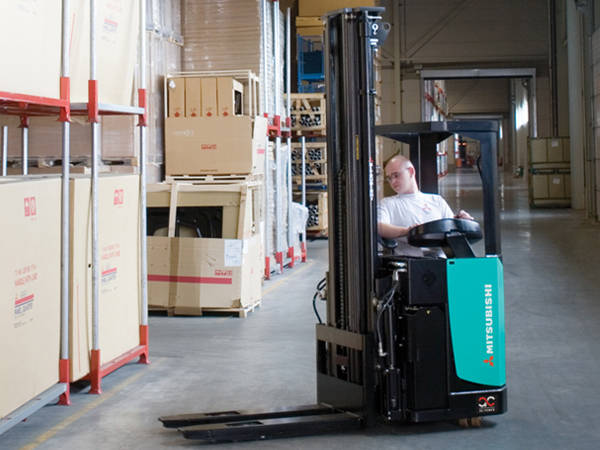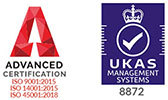There are many things on your mind when it comes to relocating your warehouse, much like there is should you move to another domestic property. The key to any big successful commercial move is to be prepared, but there are some things that you might forget about in the hustle and bustle of the process.
When making sure all of your equipment and machinery is packed up and moved, there are some other, less obvious things you should consider alongside that. In addition to making sure your new premises can accommodate all of your existing pieces of warehouse equipment, here are 8 things you need to consider when relocating your warehouse to another premises, whether it be larger or smaller.
1. Rethink your warehouse layout
No matter if you’re moving to a location that is smaller, larger or the same size, you need to think about how you’re going to layout your warehouse once you get there. It’s always beneficial to have a plan in place, and it should be as detailed as possible, especially if you want to get up and running again as soon as possible.
Even down to the square footage of space you have, it’s imperative that you know what you’re working with in order to ensure your operations continue to run smoothly and efficiently, both throughout the move and afterwards. This is particularly useful if you’re looking to make changes to the volume of inventory you have, which we’ll discuss in just a moment.
2. Don’t forget about your vertical space
It’s very easy to look solely at the square foot of space you have acquired, or will be acquiring. However, you need to look at the amount of space you have above your head, rather than just what’s under your feet. There is warehouse racking available from us here at Multy Lift that can go from the floor right up to the ceiling, as and when needed.
It might sound completely out of reach, but with the right equipment, such as reach trucks and state-of-the-art forklifts, you’ll have little trouble accessing stock on even the highest of shelves. It’s something you should consider when relocating to a more compact premises, where floor space is lacking but the ceiling is high.
3. Prepare for the future
Whether you’re downsizing or upsizing, you need to think about the future. This is because, if you’ve downsized, then you may have ambitions of expanding again one day. Alternatively, if you’ve relocated to somewhere larger, but not too vast, then consider how large your business could grow.
Would there ever be a situation where you’ll expand even further and will therefore require an even larger commercial space? If that’s the case, then how long are you hoping to stay there for? Would it be better to cut your losses and move to a larger premises from the offset, to prepare for a rapid expansion? It’s something to consider, especially if moving premises comes at a great expense.
4. Reconsider inventory volume
If you’re downsizing, then you will need to reduce your inventory levels. Alternatively, if you’re upsizing, then you’ll need to make sure you have expanded your inventory to accommodate extra orders and additional demand. Along with increased or reduced inventory volume, you should also think about streamlining or expanding your workforce accordingly. If you have increased stock levels, you need a larger workforce to deal with the demand of your customers. Not only is this more beneficial for you, both financially and when it comes to efficiency, but it also provides your customers with a satisfying experience.
5. Have security & safety as a top priority
Protecting your employees comes as top priority for any business, not just those that require a warehouse to operate. As such, you need to make sure that you have measures in place that ensure they’re protected at all times.
From painting out fluorescent lines and having designated pedestrianised spaces, to cordoning off high-voltage areas and laying non-slip flooring, there is plenty that needs to be done to protect your employees from harm before you start to operate again.
In addition, you also need to protect your stock and inventory from theft and damage. You should look into securing the stock you have, especially if it’s on a high shelf on warehouse racking.
You also need to make sure your new premises come equipped with an alarm and security system to deter thieves. This should also include CCTV, along with other preventive measures and deterrents.
6. Set out a timeline
It can be easy to get carried away, making it all the more likely that you’ll miss deadlines and risk paying monetary penalties as a result. Whether you’re late moving out of your existing premises or have failed to sign the lease on time, there’s plenty that could go wrong in terms of timings. This is why it’s best to have a timeline set out. From start to finish, set out what needs to be done and by what time.
It’s a sure way of making sure nothing is forgotten and that your warehouse relocation goes off without a hitch. However, you should also remember that there are some things you can’t control and you likely won’t have those things on your timeline. With this in mind, make sure your timeline is also adaptable and can accommodate late changes in the general plan.
7. Have a moving checklist
Much like your timeline, this is something that will ensure nothing is forgotten about. It should include things like: booking a moving company, organising inventory, arranging contacts and phone numbers, contacting people who need to be aware that you’re moving premises and so on. It’s essentially a to-do list, so make it as detailed as possible, even if it’s so small that you don’t believe it’s worth noting down. The smallest things can make all the difference, so if in doubt, note it down anyway as part of your moving checklist.
8. Remember to carry out routine maintenance
Just because you’re moving premises doesn’t mean to say that you can forget about carrying out routine maintenance, and not just on your current premises. You also need to make sure that your equipment and machinery is maintained to a good standard as well. Not only is this paramount for the safety of your employees, but it’s also important for the integrity of the equipment you have invested in.
Multy Lift has over three decades of experience in the material handling industry. We can always be counted upon to deliver quality machinery and equipment, including forklifts, reach trucks, order pickers, stackers and more. If you would like further information about the new and used warehouse equipment we have available, then get in touch with a member of our specialist team today – we are also pleased to offer forklift hire, warehouse equipment hire and pallet truck hire, along with the supply of industrial cleaning equipment.






